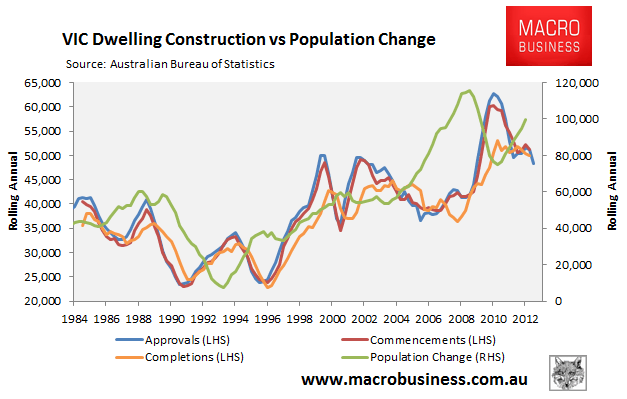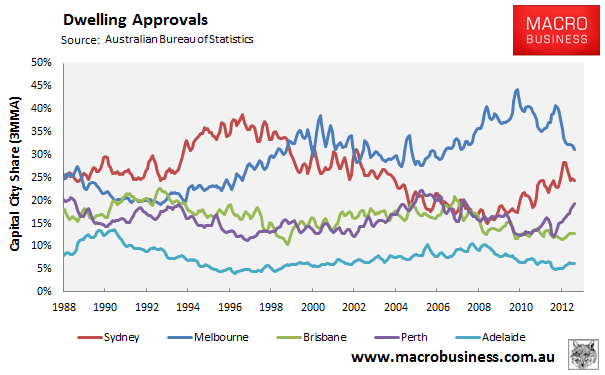Alan Moran of the Institute of Public Affairs makes plenty of sense today on housing markets. From the Herald Sun:
Commonwealth Finance Minister Mathias Cormann has argued against such a rise in interest rates and downplayed fears of a price bubble, arguing that higher prices are self-correcting because they lead to increased supply.
For most products higher prices do indeed bring an increase in supply but this does not hold for housing. That’s because the key price driver for housing is land availability. And state governments strictly limit the amount of land that might be used for housing around all major Australian cities. So, interest rate reductions improve housing affordability but the resulting higher prices bring a negligible effect on supply.
…The Government induced scarcity of land explains this. An average newly developed housing block around Melbourne (with roads, water, sewerage etc) costs $211,000, a ninefold increase since 1985. Without government restrictions on city edge land use, that block would cost under $100,000. Regulatory-driven scarcity adds $100,000 to $150,000 to costs which the new homeowner must bear.
There is an abundance of developable land on the edge of Melbourne, as with all Australian cities. Freeing up the regulatory bans on development would see new house-land package costs fall by a quarter.
But the Minister, Matthew Guy, takes his advice from an unholy alliance. One part comprises property speculators who have approval for their own lots to be developed and don’t want to see competition undermining the prices they expect. In support are greenish busybody “experts” and agitators who want to confine new home building to within existing built-up areas, seldom drawing attention to the fact that less than one per cent of Victoria is urbanised.
Spot on. Though I will add that unresponsive supply means more volatile cycles not no cycles. The supply response comes but too late and then hits when the cycle turns down.
Victoria is a classic example with a pre-GFC population surge only now delivering its supply dividend. A couple of charts from our recent Member’s Melbourne Property Report makes the point:

In fact, Melbourne has easily led the nation in dwelling construction, averaging 38% of capital city approvals since the beginning of 2009 – well in excess of its 28% share of capital city households (see next chart).

Current Melbourne price rises are based cheap money only and are more vulnerable to correction than Sydney where supply is genuinely short of demand. In the mean time, so long as regulators are vigilant, Melbourne’s poor fundamentals should contain price rises.

